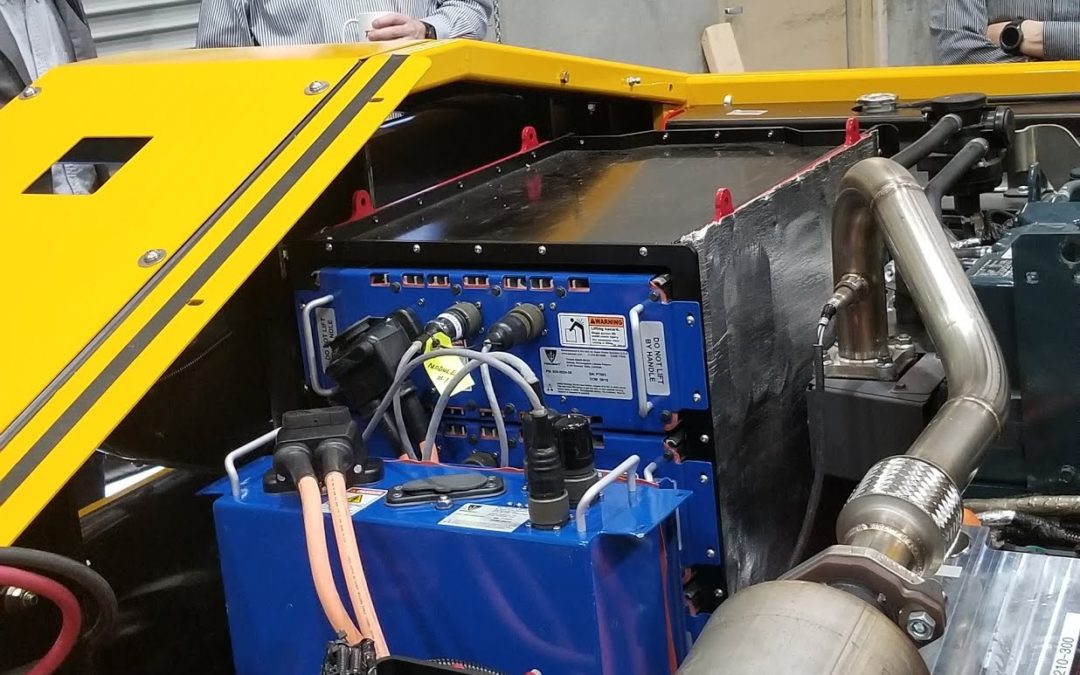


The Path to Money Is Getting Wider
Good News for everyone seeking clean tech funding. The number of available programs in 2020 and beyond is getting better and the opportunities to get that critical first funding are improving. As we have often said, if you are looking for funding as a new startup, the place to look first is not the Venture Capital firms and not even wealthy individuals. Instead, one should apply for various grants and contracts that do not involve your surrendering any shares in your company. Fortunately, those opportunities have been on the upswing. Then you can climb up the ladder to VCs and wealthy investors with a much better pitch.
The place to start is with sources that are specifically focused on clean tech. Many of the early stage grant-awarding sources favor IT, even if they include cleantech in their list of target areas. The California Energy Commission (CEC) is clearly top of the list. They have multiple programs funded from funding by the Electric Program Investment Charge or EPIC. This is a surcharge on the electric bills of all investor-owned utility customers which brings in about $130 million per year which pays for a number of programs. The CEC sets priorities every three years for the use of this money and those priorities are summarized here.
The program of most interest is CalSEED. It provides $150,000 in funding for proof of concept to about two dozen companies each year, 25% of which are supposed to be from the Central Valley. Since its inception, CalSEED has funded 109 companies. Typically over 100 companies apply each year, so it is very competitive. Applications for 2020 will open soon, so get ready. Of the two dozen getting the initial grants, about 6 are advanced to the prototype or customer demo stage with a $450,000 grant. In neither case is matching money required. This is almost unique in the clean tech funding world. The application is fairly simple, but it is important to provide clear answers. If you are ready to apply, let us help you with the application.
The second most interesting CEC program is Bringing Rapid Innovation to Green Energy or BRIDGE. This program targets companies that are a bit farther along. It awards follow-on funding to companies that have already been funded by the CEC, the Department of Energy, DARPA, and NASA and met their technical goals. BRIDGE does require significant matching money from private investment. In 2019, the CEC awarded $9 million to three battery development companies under this program.
Third at the CEC has been the funding to provide support for production scale up at in-state manufacturing of promising technologies. The CEC awarded $22.4 million to ten companies in this category in 2019, with two getting the largest awards of $4 million and the smallest an award of $1.1 million. A minimum 20% match is required. The summary presentation package from the 2019 solicitation round is here. The 2020 solicitation will likely be made before the end of January, so be on the lookout for it.
Other EPIC funding is available for specific solicitations of demo projects that are issued throughout the year. These also require matching funds, from 20% up to 50%. They are appropriate for more established companies seeking to support an important pilot project or technology demonstration. Watch the CEC website for notifications of these solicitations.
Beyond the CEC funding, there are a number of other opportunities for tech-based startups. However, these do not have the focus on just clean tech companies like the CEC. The Big Bang! Business Plan Competition at UC Davis comes close and offers prize money to winners and has a clean tech prize ($3,000) and an energy prize ($10,000) available in addition to a first prize overall of $20,000. The final deadline for entry is January 24. Look here for the details.
The Small Business Administration provides a number of opportunities. One is the workshop series presented by local firm Momentum on how to apply for and win Small Business Innovation Research or SBIR grants. The next workshop is January 7 and you can get info to register here. Various federal agencies put out SBIR solicitations, so some times it is a matter of keeping a close lookout for the right one for you. These usually seek technology development on specific topic areas.
Another is the program funded by SBA’s Small Business Development Center for the CoWo Campus in downtown Sacramento to put on a startup accelerator for 15 companies with 3 receiving up to $20,000 in funding. To apply go to the CoWo website. The deadline is January 31.
The City of Sacramento Urban Technology Lab (SUTL) offers grants to transform Sacramento into a “living laboratory” for entrepreneurs, advanced technology businesses, and academic institutions to test, develop, and scale their ideas, products, and services. However, for the next three years (2020-2022), SUTL will focus on three areas: The Internet of Things (IoT) and Cybersecurity, Mobility, and Health IT and Life Sciences. If your clean tech idea fits one of these categories, give it a try. Grants will likely be in the $25-100,000 range. The 2020 program is still being created, so keep an eye on http://www.innovatesac.org for announcements.
Finally, the Sacramento Angels are open to funding clean tech ventures, usually in the $25-50,000 range. They have funded them in the past and are actively looking now. However, clean tech is probably a secondary focus. You can apply to the Angels through http://www.sacangels.com.
These are all stepping stones to get over the funding gap while startups are getting ready to approach VC firms. Eventually you will need to go to them. But here the news is good too. Lokesh Sikaria and Moneta Ventures has seen success in investing in local firms and is creating a new and larger fund to take advantage of more opportunities, with the door open for clean tech. Impact Venture Capital is looking to invest in companies with an AI focus with its second fund. Kevin Nagle, one of the Sacramento Kings investors, has expressed interest in creating a $250 million Sacramento-focused fund as well. In all, there may be $500 million in accessible VC capital in our region. But only for companies that have been put through their paces in these other programs and can demonstrate compelling customer interest and revenue of $500,000+.
Understanding how this ecosystem of funding is developing and what you need to do to access it can be a key to your success. This is just a brief overview. If you are seeking funding, come talk with us. And especially sign up for our classes in preparing your company to be fundable by using the Business Model Canvas. We will be announcing the first classes soon.

ABOUT THE AUTHOR
Gary Simon is the Chair of CleanStarts Board. A seasoned energy executive and entrepreneur with 45 years of experience in business, government, and non-profits.
CleanStart Sponsors
Weintraub | Tobin, EY, Stoel Rives, Greenberg Traurig LLP
BlueTech Valley, Buchalter, Moss Adams, PowerSoft.biz
College of Engineering & Computer Science at Sacramento State

2020 Predictions
Since I went 4.5 for 10 last year I felt I needed to return to my terot cards take another shot at ten fearless predictions for the coming year. We will revisit these at the end of the year to see how we did. If you have some insights or questions, let us know at Info@cleanstart.org and we will include those in a future newsletter.
- The momentum for the “hydrogen highway” will stall out. Battery electric vehicles are proving to be superior to hydrogen fuel cell vehicles in almost every way. As a result, sales of hydrogen fuel cell vehicles are lagging expectations and hydrogen sales have grown slowly. About 152,000 battery electric and plug-in hybrids were sold in the state in 2019, compared to about 1500 fuel cell electrics. Only 8 FCEVs were sold in the last quarter of 2018 in our ten-county region. Probably fewer than 30 were sold here in all of 2019. The total registrations for FCEVs in the state stands at about 6,000 at year-end, while the total for battery and plug-in electrics is about 616,000. (Exact data as of end of 2018 are 248,332 battery electrics, 216,042 plug-in hybrids, and 5,391 FCEVs). In 2017, the Air Resources Board projected that there would be 13,400 FCEVs in 2020 and 37,400 by 2023. At one time, the goal was a million FCEVs by 2030. None of these will be even close to being realized.
A huge reason is that hydrogen fuel has turned out to be much more expensive than gasoline and particularly more costly than electricity. Currently, hydrogen is priced at about $12.50 per kg, with equivalent energy to a gallon of gasoline but with a fuel cell double the efficiency of an engine, the equivalent of gasoline is more like $6.25 per gallon. Stated another way, gasoline costs about 12 cents per mile (at $3.15 per gallon), hydrogen 25 cents, and electricity 6 cents.
This leads us to make several predictions for 2020: - Sales of FCEVs in our region will fall below 10.
- The number of hydrogen refueling stations will barely reach 50 statewide (there are 44 now, with 3 in our area). Governor Brown’s goal was 100 stations by 2020, 200 stations by 2025, and 1000 by 2030. We may never see 100 stations in California.
- The price of hydrogen locally will not fall below $10 per kilogram.
- A major auto company will announce it is dropping its FCEV production.
- The number of EV charging stations around Sacramento will exceed 1000. According to ChargeHub, there are currently 566 charging stations within 15 km of downtown Sacramento. Of these 478 are Level 2 (220 V) chargers and 88 are Level 3 (480 V, 110 A). We believe the total for this area will exceed 1000 by the end of the year with over 200 being Level 3. We may also see the first fast chargers go into existing gas stations, an interesting development in itself.
- One more independent EV company in the US will announce it is beginning manufacturing. The field is getting crowded and one might think some companies would drop out. They may, but at the same time we think there will be at least one more entrepreneur who will take the plunge. At the same time, we could see some other established car companies announce full battery electric cars this year.
- There will be at least 15 nominees for Sustainable Innovation of the Year. Stoel Rives and the Sacramento Business Journal will be conducting this contest again in 2020, the fourth year for it. It has been a good way to highlight the best and brightest in clean tech. The number of companies nominated has been an indicator of interest in sustainability and of the level of activity in the clean tech community. The first year, there were 16 nominees, but the number has trended down ever since. We believe there has been a surge in bringing innovations to market in our area and that should be reflected in the number of nominees.
- Prices for a ton of carbon emission reduction in 2020 will still not break $20. It has been rising slowly both in the prompt and futures markets, but the supply of carbon emission reductions has continued to grow, keeping a lid on prices. The most recent price for carbon allowances for 2021 cleared at $19.53, so maybe next year we will have to take a closer look.
- The installed cost of solar PV will rise modestly. We were wrong about this one last year. But with the new requirements for solar on all new homes and the continuation of the tariffs on Chinese panels, we cling to the idea that the cost will be pushed up a few cents from its current $4.50 per kW on homes.
- The revenue generated by our regional clean tech companies will top $6 billion. The last time we collected this information in late 2018, the total was $5 billion, but we see an upswell in sales success. Maybe it will result in 20% growth over two years. Wouldn’t that be nice?
- A bill will be introduced in California to extend generous subsidies to homeowners to install storage. The subsidies for PV panels are declining. There are subsidies for grid-scale storage, but not much for the homeowner. We expect there will be a move to change this, but it won’t pass. Maybe 2021.
- Two renewable-based microgrids with over 1000 customers each will be established in Northern California. The power shutoffs of last year are accelerating the interest of communities in creating sections of the grid that can be powered more reliably. Already, PG&E has trucked-in engine-generators to provide power during shutoffs, but people are demanded cleaner solutions. Some clever communities, whether as part of the CCA movement or separately, are looking at solar, wind, hydro and battery combinations to give them better reliability. Dozens if not hundreds of communities are having these discussions. There are already about 100 microgrids in the state serving a few large customers each in most cases. The question is whether this will spread to larger aggregations of customers and to the use of renewables. There are many obstacles, so getting two done in 2020 is actually a pretty aggressive prediction.
- One cleantech startup in our region will be acquired for a substantial sum. We know there are several discussions underway. Just waiting for the shoe to drop.
Make sure to follow CleanStart this year and see how I do on my predictions.
Follow us on Social Media to keep upto date!

ABOUT THE AUTHOR
Gary Simon is the Chair of CleanStarts Board. A seasoned energy executive and entrepreneur with 45 years of experience in business, government, and non-profits.
CleanStart Sponsors
Weintraub | Tobin, EY, Stoel Rives, Greenberg Traurig LLP
BlueTech Valley, Buchalter, Moss Adams, PowerSoft.biz
College of Engineering & Computer Science at Sacramento State

December 2019 Newsletter

Terzo Surges with Hyrdrapulse
Many of you have heard us talk about Terzo Power and Hydrapulse in El Dorado Hills. They were one of our first profiles back in 2017 after receiving a $4 million dollar grant to build a demonstration unit for their hybrid hydraulic system. We touched on them again in 2018 when they won the Innovation Award and when they demonstrated a hybrid tree shaker equipped with their tech. Well, recently Hydrapulse has been surging towards the hydraulics market.
Hydrapulse is basically a high efficacy pump for hydraulic systems providing on-demand power enabling smarter solutions. Typically Hydraulic systems require constant power to operate, this is why in farm fields there are large diesel engines running. They need that power for their hydraulic systems. While this may seem inefficient, most hydraulic systems are highly specialized in pretty much all industries making most of the cost in the initial design, not the operating cost. Creating a system that is efficient requires expensive expertise and is often not versatile. In creating the Hyrdapulse, Terzo Power has built a versatile solution that will only supply the flowrate and pressure that is demanded at any given instance, enabling manufacturers to build efficient systems.
This technology opens up industries to create more variable systems and building hybrid platforms for heavy-duty off-road Vehicles (Farm Equipment). Now that Hydrapulse has been demo’ed, Terzo is looking at scaling intelligently. Talking with Richard DiGirolamo, Vice President of Sales, Business Development and Distribution, it is apparent how much effort is being put in doing this right. Building partnerships with Eagle Fluid Power, DTS Fluid Power, Inc., Cross Company, Hydra-Power, and Controlled Fluids Inc. so the Hyrdrapulse can reach across the US through distribution channels. Beyond that, DIGirolamo is working to bring Hyrdrapulse to an international market.
Terzo Power’s growth in the past year is a good example of how a company can incorporate an EPIC grant into its business while building a successful business case for their technology. The grant didn’t do it alone, Terzo Power has relied on building a team and network in the area. Mike Terzo, CEO, is on the board of the SMUD Mobility Center to strengthen their network. Connecting with Stoel Rives LLP for profession support and finding staff supporting their growth have kept their growth sustainable.
Follow us on Social Media to keep upto date!

ABOUT THE AUTHOR
Osato Evbuomwan is a CSU Sacramento Mechanical Engineering Graduate Student who is the newest associate at CleanStart. Growing up in Nigeria with smog from backup diesel/ gasoline generators inspired Osato to work towards building a sustainable future for the world.
CleanStart Sponsors
Weintraub | Tobin, EY, Stoel Rives, Revrnt, Hacker Lab
BlueTech Valley, Buchalter, Moss Adams, PowerSoft.biz
College of Engineering & Computer Science at Sacramento State

